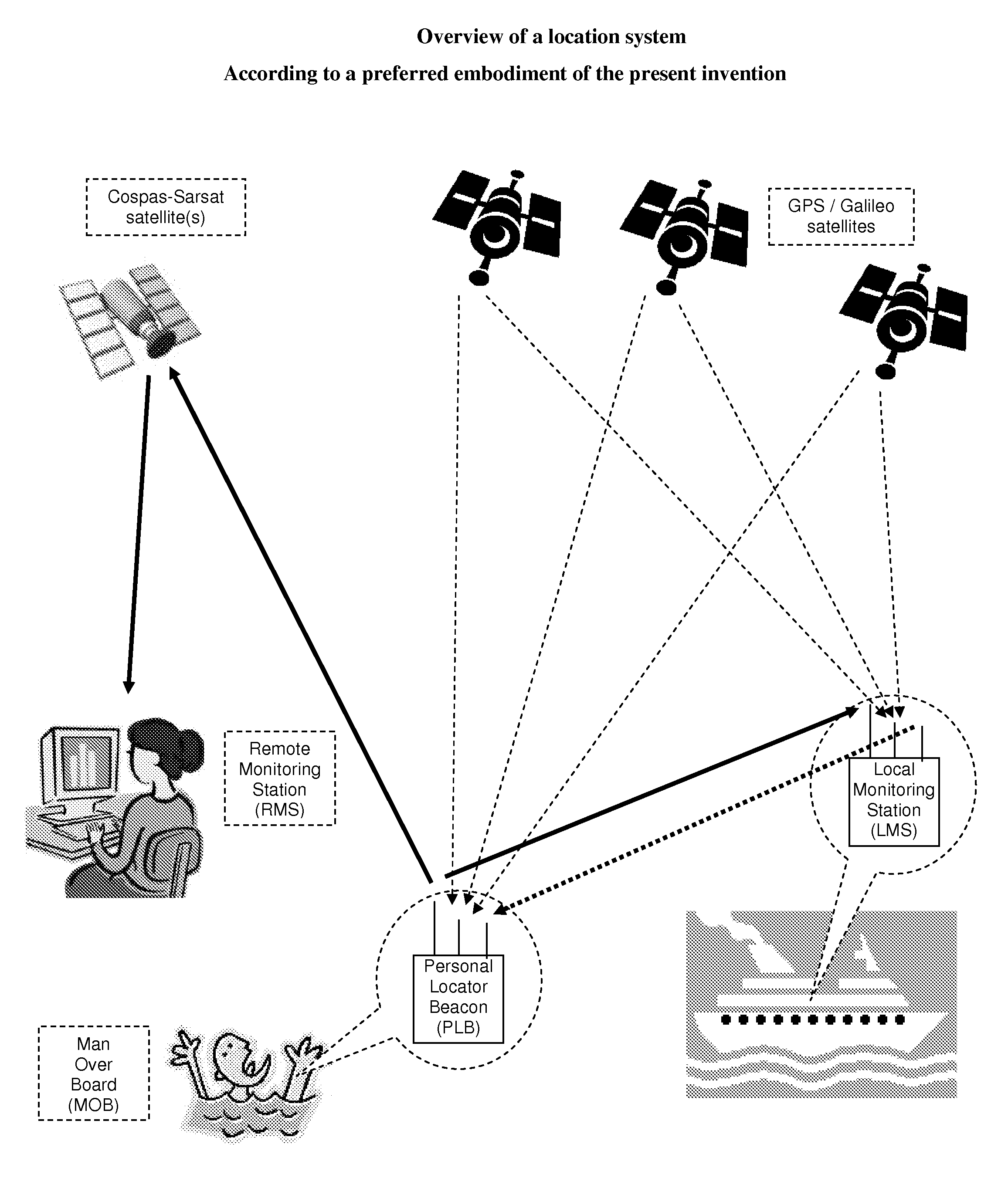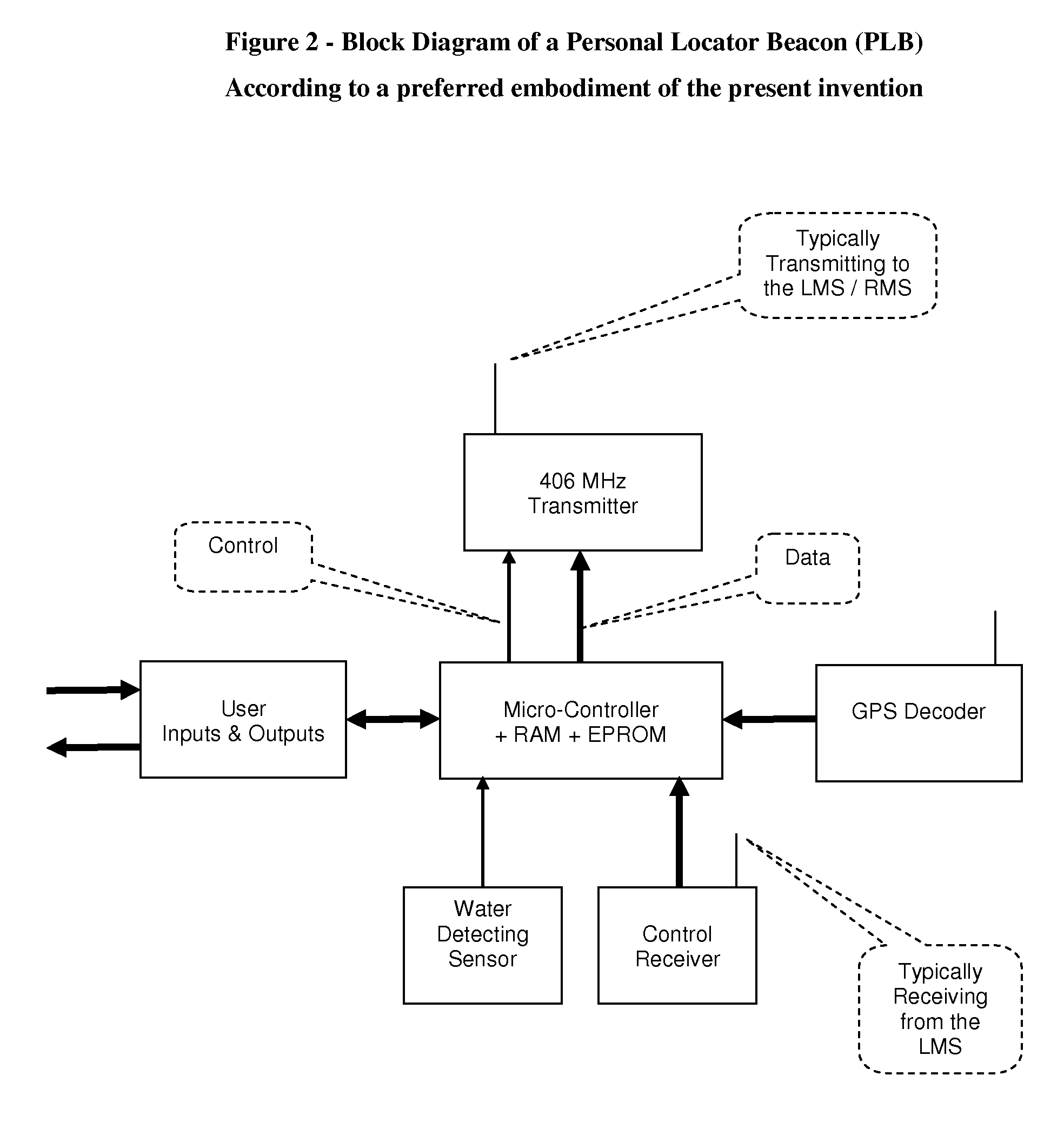Dual mode personal locator beacon
a personal locator and beacon technology, applied in direction finders using radio waves, instruments, electric signalling details, etc., can solve the problems of less efficient sar systems for individuals, limited survival time in water, and thousands of people lost at sea every year, so as to reduce the transmission repetition rate of successive signals, save effort, cost and danger, and prolong the effect of plb
- Summary
- Abstract
- Description
- Claims
- Application Information
AI Technical Summary
Benefits of technology
Problems solved by technology
Method used
Image
Examples
second embodiment
Description of the Invention
General
[0134]According to a second embodiment of the present invention, the PLB is a location radio beacon, configured to be installed in 20 feet or 40 feet containers, carrying valuables on container ships or long haul tracks (semi-trailers or full trailers); the LMS is configured to be installed onboard a ship or track or in a port or hub or container depot; the RMS is at the headquarters of a shipping company, linked to a satellite communications system (“satcom”); the PLB is provided with a satcom transmitter, and the LMS is provided with a compatible receiver. Though the second embodiment PLB is not carried by a person, it is still named “Personal Location Beacon” (PLB), for consistency with the first embodiment terminology.
PLB Structure
[0135]FIG. 4 shows a Block Diagram of the second embodiment PLB. As a skilled person may observe, the blocks in FIG. 4 are a sub set of the blocks in FIG. 2 (first embodiment PLB). Differently than in the first embodi...
PUM
 Login to View More
Login to View More Abstract
Description
Claims
Application Information
 Login to View More
Login to View More - R&D
- Intellectual Property
- Life Sciences
- Materials
- Tech Scout
- Unparalleled Data Quality
- Higher Quality Content
- 60% Fewer Hallucinations
Browse by: Latest US Patents, China's latest patents, Technical Efficacy Thesaurus, Application Domain, Technology Topic, Popular Technical Reports.
© 2025 PatSnap. All rights reserved.Legal|Privacy policy|Modern Slavery Act Transparency Statement|Sitemap|About US| Contact US: help@patsnap.com



